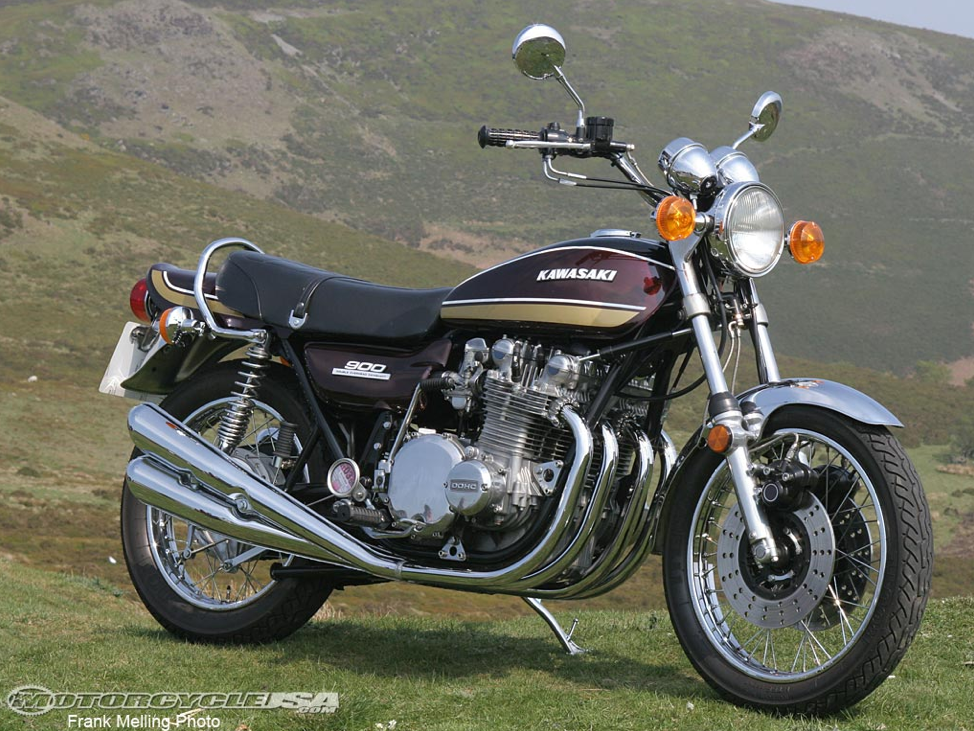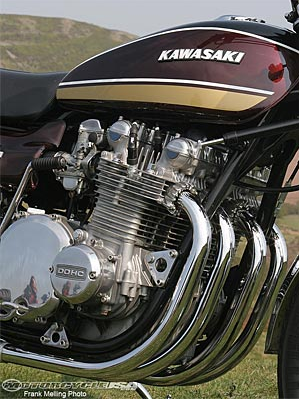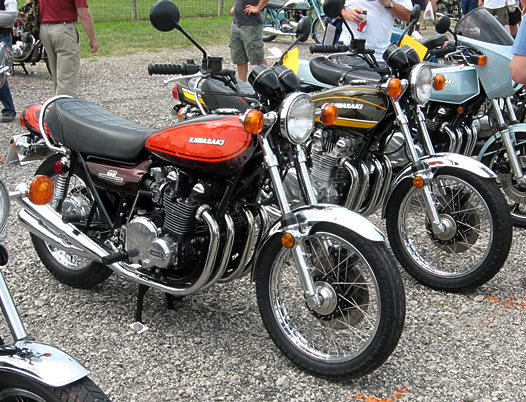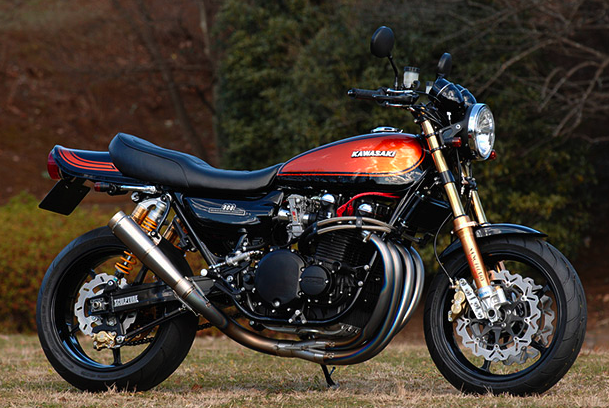Classic Bike of the Month: The Kawasaki Z1 900

Kawasaki Z1 rendered perfectly
It was arguably the sexiest Japanese motorcycle ever launched. Loud as a Ferrari, nice and fast, cheeky-handling, reliable, easy to work on and superbly engineered, the Kawasaki Z1 900 was the bike every real rider and pretend rider, like me, wanted.
First introduced in 1972, the Z1 Kawasaki 900 can easily be called the world's second superbike, with many motorcycle historians arguing that only the Vincent Black Shadow had earned the title before it.
At this pivotal moment in Western culture, new products and trends had a habit of appearing, seeming extreme for a week or two and then going mainstream. Whether braless schoolteachers, weekend orgies next-door or spicy foods from then-exotic lands like Morocco and Mexico, the West was hitting second gear in its first-ever 'Me' time.

Kawasaki Z1 powerplant was built to last fast
The Z1 was the right machine for this era in terms of the market, but also as a means for Kawi to kick Honda - which had already launched its rather utilitarian and frumpy 750 Four to wide acclaim - where it could cause the most pain.
The Z1 wore a four-cylinder, across the frame, 903cc displacement engine with 66mm stroke and bore. The countershaft sat in needle bearings, with two overhead camshafts placed on a massive block feeding four elegant and rather grumbly mufflers.

Kawasaki Z1 as it was
'Project New York Steak', as the US Z1 development initiative had been code- named, was lead by Kawasaki America's senior test rider, Bryon Farnsworth, and assisted by Kawasaki's race team of Gary Nixon, Hurley Wilvert and Paul Smart. Their repeated attempts to break it failed.
Part of the test program, undertaken at the Talladega Speed Bowl, was to run the bike flat-stick for the full capacity of the gas tank. Though the test riders reported some weaving at terminal velocity, a respectable 130-mph plus, the engine had proved itself bombproof.
In spite of encouragement from its test riders, Kawasaki management was still uneasy about the sales potential of their new flagship. Production was set at a modest 1,500 units a month. But by 1975, 5,000 Z1s were racing off Kawasaki's production line monthly.

Kawasaki Z1 holding its cred high
The Z1 was all things to many. Lust-inducingly gorgeous, its fit and finish were exemplary and the styling breathtaking. A kicked up rear seat fairing, slender saddle and aggressive engine-pipe combo spoke eloquently to connoisseurs. On a Z1, you were plain and simply the shit.
The engineering was ingenious and clever. All but major work could be done with the engine resting in the frame. The all-roller-bearing crankshaft was constructed of nine individual components and was over-engineered even for racing. The Z1's eight-plate clutch was burly, unbreakable and the pinions in the five-speed gearbox massive.

Kawasaki Z1s clean up rather well
The Z1's handling was, well, crap. But who cared when you had all that other stuff going for you, and the ladies lining up for a sesh on pillion? The useless stock Dunlop Gold Seal tires were part of the problem, and the suspension only made things worse. The rear dampers didn't damp, the front shocks were a forking disaster and, even with twin-discs below, riding anywhere near its potential top speed was an exercise in frequent testicle- retraction.
In 1976, after several refinements to the Z1, Kawasaki nixed the marque in favour of the KZ900. Almost the same machine as its predecessors, it was treated to tuning alterations and given smaller carbs to hone a few ponies off the powerplant and tame the beast. Purists called this a tragic mistake.
So ended the Z1 era.
Since that time, the Kawasaki Z1 hasn't given up an inch of its legendary reputation as both a thrilling ride and a timeless piece of motorcycle engineering and design. Collectors are getting upwards of $20,000 for restorees and the global trade in Z1s is brisk. They customize rather well, and are still raced and still not blowing up.
Now, turn up your volume: http://esr.cc/ygmgpX http://esr.cc/zTskuw
You must be logged in to comment
Login now
I ,m still riding mine ..some corrections for you These bikes had 4 mufflers & were quiet till you changed them., the bike has 6 roller bearings supporting the crank shaft alone , the rods had their own, it still is the only bike with cam bearings separate fom the head ( which can be bought out of the Moog bearing company catelogue) ..Front suspention was improved on the 1976 models, & the rear being sturdy enough but with useless dampening,As long as neck & swingarm bearings where tight,handeling is better than reported.These models 72 to 76 had steel on steel swingarm bearings that refused to take grease until heated, & therefore most people ran them dry.Up to 76 had bronze alloy valve guides ,(suitable for drag strips but not great for longlife ) as Kawasaki knew these would show up at the strip,& they didn't want any exploded engines from dropped valves in their advertiseing. The steel ones are interchangeable with the bronze alloy ,Steel for the street , bronze for the strip,No one usually loosened & then tightened the one bolt necessary to let the spring loaded cam chain adjuster do it's job, ( mostly cause no one could explain what that one bolt did!)., So they would faithfully run, even after smashing the slack cam chain against the front engine cases & knocking the $13 solid guide to pieces.It's really the first bike to use oil cooling( in addition to traditional fins & air cooling), as the oil pump was low pressure, & had to pump massive amounts of oil at a maximum of 6psi through the 10 rollers in the crank & rods, & then the transmission bearings as well, effectively takeing a lot of heat with it & stabilizeing engine temp throughout the motor. The inverted bucket against the cam shaft was a first for production bikes, & the desighn can be traced back to offenhauser & world war 2 air craft .,Yup it was a copy.The rest is history.